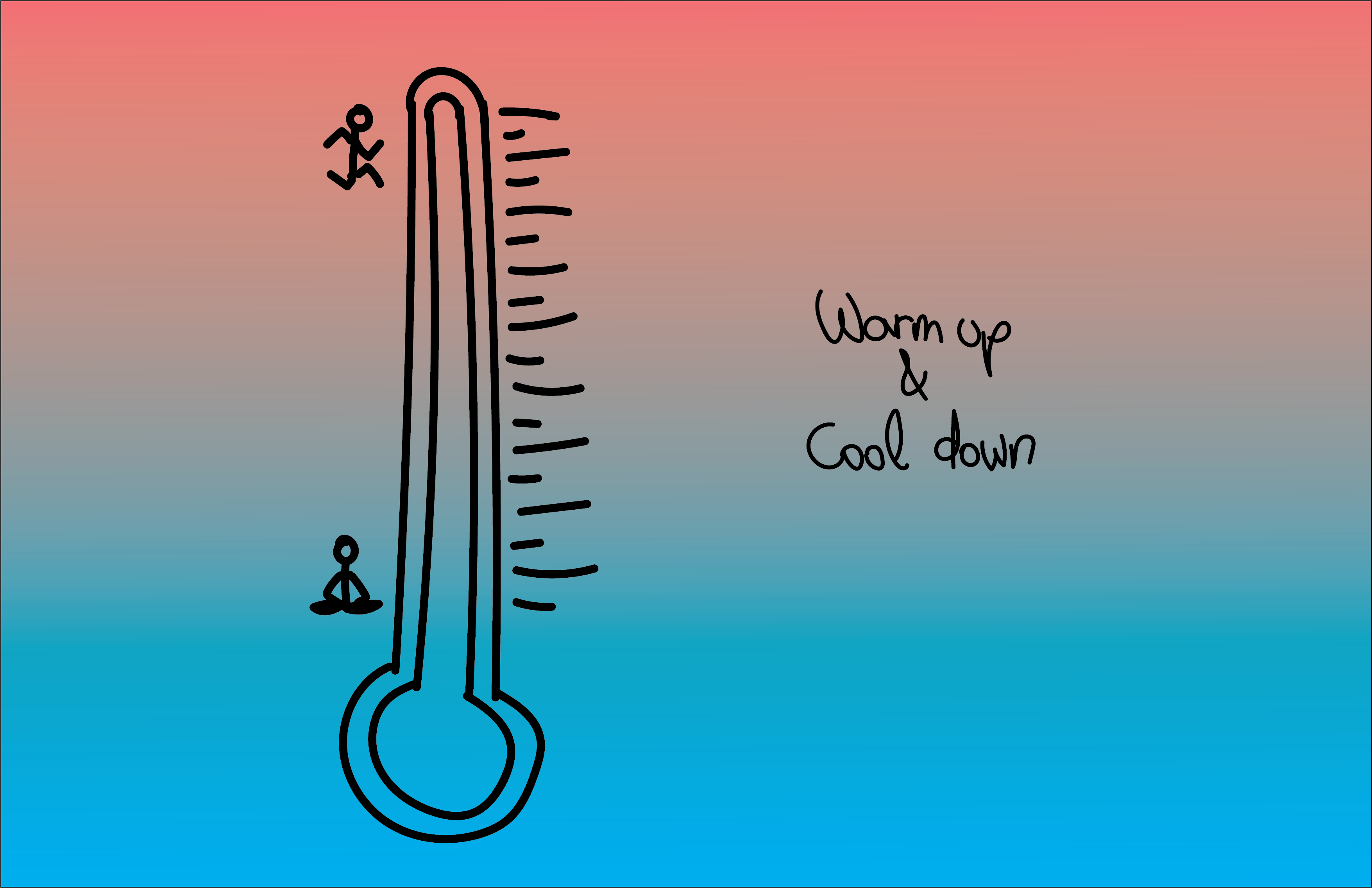
Warm up and cool down
For every practice session, you should warm up first and cool down before you pack your things and go home. You should do this in order to prepare your body for the upcoming training load, respectively the end of it.
When warming up, there is plenty of physiological processes that prepare your body to deliver the best possible performance, to prevent injuries and optimally also motivate you for the practice session: First of, warming up leads to an increased body temperature which then again leads to a decrease of myofascial resistance (so the resistance between the muscles and also between the muscles and the surrounding fascia). The function and coordination of and between muscles and also the function of the nervous system improves and the body produces more synovia (the liquid that nourishes the joint cartilage and protects the bones of the joint). The cardiovascular and respiratory performance of the body gets better and so does the oxygen uptake. That leads to a better supply of the brain, which boosts the ability to concentrate and the self-perception – a very important part in injury prevention.
There are different kinds of warm up, that have different aims and dimensions:
- General warm up: In order to generally warm up the body, to bring the heart frequency and the body temperature up, there are no dance specific or style specific moves necessary, but rather movements that also a runner or football player could do in order to warm up (e.g. rope skipping or light running). Of course, movements like bouncing or light jamming could also be used, but there shouldn´t be stress on the joints, muscles etc. yet. You should use ca. 50-60% of your capacity, so the warm up shouldn´t exhaust you. And while warming up you should notice your breathing getting faster, your skin tone becoming slightly reddish and you should lightly sweat already. If you still have cold hands or feet after the general warm up, you didn´t warm up properly.
- Specific warm up: After the general warm up, there should follow a more specific one containing style and technique related moves and exercises, maybe strength- and mobility exercises, dynamic stretching and isolation exercises that prepare you for what you want to practice in the upcoming session. You could mark combos or choreographies already, but shouldn´t do them full out yet.
Additionally what could be helpful is a:
- Mental warm up: It means imagining movements, combos, choreographies before doing them, which increases the perception and activates the necessary physiological structures already. It cannot replace the general or specific warm up though!
- Passive warm up: Also the passive warm up has to follow the general and specific warm up. It can help in very stressful situation, e.g. before a battle or premiere, but there is also the danger to calm you down too much, before you have to perform. The passive warm up can consist of stretching, mobilization or relaxation, breathing exercises or even of massages or such things in order to calm you down a little.
When you are warmed up properly, the central content of the practice session can follow (e.g. technique or concept training, choreography etc.)
The cool down then has the aim of transition into a regeneration phase and to also prevent the dancer from injuries. What happens physiologically is the body temperature and the cardiovascular and respiratory performance decreases. The concentration levels down, which prevents you from a sudden concentration break down, which can lead to injuries (e.g. missing a step on the stairs) and the regeneration starts. It can consist of dynamic or static stretching, breathing exercises etc. To fill up your energy storages you should also drink enough and eat afterwards.
This topic is a pretty complex one, though it is part of our training routine and everyone seems to have his/her way to approach it. If there are any further questions, suggestions for other Blogposts diving a little deeper into this or so, let me know.
Sources: Kaufmann, J.-E. (2016): Tanzpädagogik & Tanzmedizin. Die Symbiose der Zukunft. Remscheid: Rediroma-Verlag.
